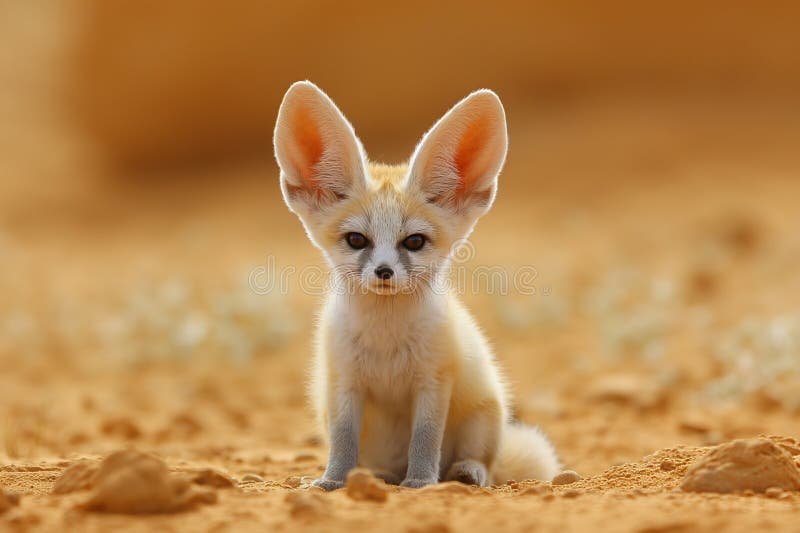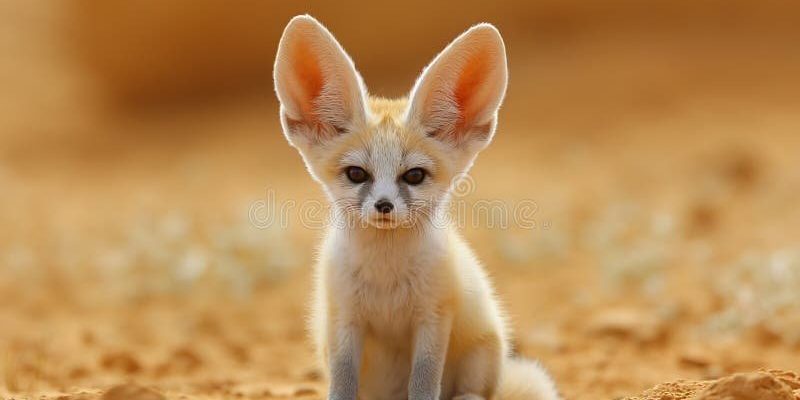
Just like a seasoned traveler knows how to pack for the desert, fennec foxes have evolved over time to master their tough habitat. They’ve developed unique adaptations that help them survive when temperatures soar and food is scarce. Want to take a deeper dive into their world? Let’s explore how fennec foxes make life in the desert not just bearable, but thriving.
Physical Adaptations for Temperature Control
One of the fennec fox’s most notable features is its impressive ears. These aren’t just for hearing. Honestly, they act like a natural air conditioner! The large surface area of their ears helps dissipate heat. When the sun is blazing down, these foxes can cool off by releasing heat through their ears, which is essential for their survival in the scorching environment.
But there’s more. Their soft, sandy-colored fur reflects sunlight, preventing them from absorbing too much heat. You might picture a cozy blanket on a chilly night; the fennec’s fur serves a similar purpose by keeping them warm during dip-in temperatures at night. At the same time, it allows them to blend in with their surroundings, providing camouflage from predators.
Let’s not forget their paws. Fennec foxes have thick fur on the soles of their feet, which protects them from hot sand. Think of it as wearing fluffy slippers while walking on a sandy beach—it makes all the difference!
Behavioral Adaptations for Survival
You might be wondering what else fennec foxes do to survive. Behavioral adaptations are just as important as physical ones. For starters, they are primarily nocturnal. This means they’re active at night when temperatures drop. It’s a bit like choosing to go for a jog in the evening rather than during the sweltering heat of midday.
By hunting for food and exploring their territory during the cooler hours, they can stay hydrated and avoid overheating. Fennec foxes hunt small animals like insects, rodents, and even birds, relying on their keen sense of hearing to locate prey in the dark. Imagine being able to hear a mouse’s heartbeat from a distance—that’s the level of sensitivity these foxes possess!
Moreover, they can store fat in their bodies, which is incredibly useful when food sources become scarce. This helps them go longer without eating, allowing them to endure periods of drought and food shortage, similar to how humans might ration food during tough times.
Water Conservation Strategies
Living in the desert means water is a precious resource. Luckily, fennec foxes have impressive water conservation strategies. They don’t need to drink water as often as other animals. Instead of relying solely on drinking, they get moisture from their diet. The insects and small mammals they consume are water-rich, providing hydration directly through their food.
Additionally, fennec foxes are highly efficient in managing their body’s water levels. They produce concentrated urine, which helps minimize water loss. Imagine filling a water bottle to the top and only using it sparingly. That’s how these foxes work with limited water in the desert!
This adaptation is essential for survival when rain is a rare event, allowing them to thrive in conditions that would leave many other animals parched and desperate.
Social Structure and Communication
Fennec foxes are social animals that often live in small family groups. This social structure helps them survive in their harsh environment. By working together, they can share resources, protect one another, and increase their chances of finding food.
They communicate through a variety of sounds, including barks, growls, and even whines. Just like friends might share jokes or warnings, fennec foxes use different vocalizations to convey messages to one another. Their ability to communicate effectively contributes to their survival, as they can alert each other to dangers or food sources.
Additionally, these foxes create elaborate burrows where they can escape the heat of the day and find safety from predators. Picture a cozy underground home with tunnels and chambers—that’s their little slice of paradise!
Adapting to Changes in Environment
Desert environments can be unpredictable, with changes in climate and availability of resources. Fennec foxes are incredibly adaptable creatures. If a particular area becomes depleted of food, they can travel significant distances to find a new territory. It’s like moving to a different neighborhood when your favorite coffee shop closes—it’s all about finding what works best for their survival.
They can also shift their diet based on what’s available. Whether it’s insects during the wet season or small mammals during drier times, these foxes adjust their hunting strategies accordingly. This flexibility ensures they can thrive in even the most challenging conditions.
Moreover, fennec foxes have fewer natural predators in their arid habitats, giving them a better chance to bounce back when faced with challenges. Their quick movements and keen senses help them evade danger, further solidifying their status as survivors of the harsh desert.
The Role of Fennec Foxes in Their Ecosystem
Even though fennec foxes face tough living conditions, they play an essential role in their ecosystems. As predators, they help control populations of insects and other small animals. By keeping these populations in check, they contribute to a balanced ecosystem, much like how a traffic signal helps keep cars moving smoothly at an intersection.
Additionally, their burrowing habits help aerate the soil and create habitats for other creatures. When they dig, they may inadvertently create homes for various insects and plants, promoting biodiversity. This interconnectedness highlights the importance of every species in maintaining a healthy environment.
Fennec foxes remind us that even in the harshest of environments, every creature has a purpose and can thrive if they adapt well. Just like how we find our ways to cope with life’s challenges, these foxes have their own unique strategies for surviving in a world filled with extremes.
In conclusion, the fennec fox’s incredible survival strategies showcase nature’s ingenuity. From their physical features to their behaviors and adaptability, these little desert dwellers demonstrate resilience in the face of adversity. So, the next time you hear about a tiny creature thriving in the desert, remember the fennec fox and its fantastic story of survival.

